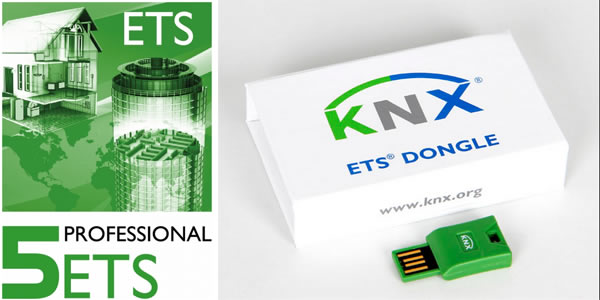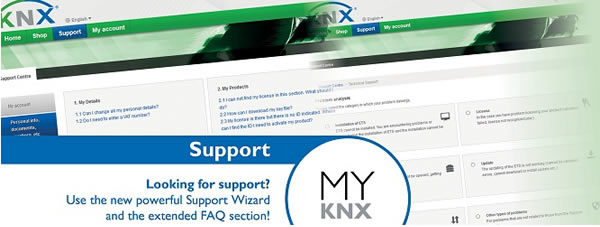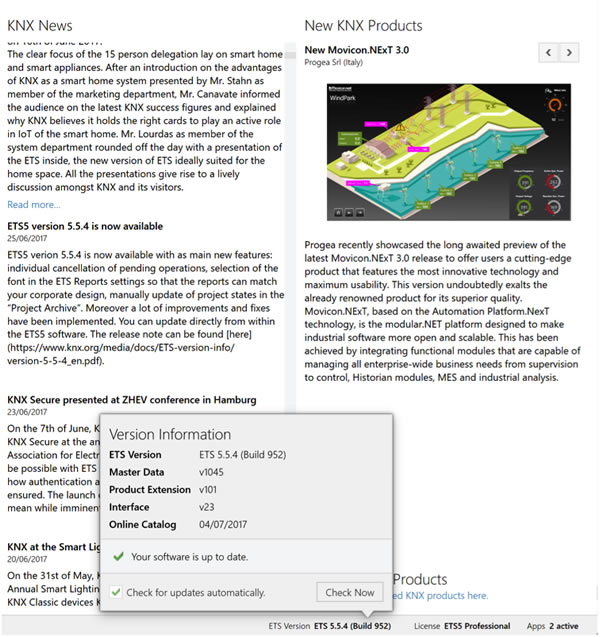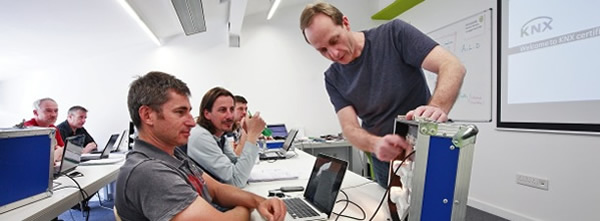 By Mark Warburton, Ivory Egg.
By Mark Warburton, Ivory Egg.
As a distributor of KNX we are regularly contacted by customers asking about the KNX commissioning tool, ETS5, and how to purchase it. There is also the occasional complaint about software bugs or lack of functionality in the software.

Although we do provide a lite version of the software during our KNX technician course, the KNX Association is still the ultimate supplier of ETS5, and so is the main contact for any questions or issues. There are lots of FAQs on the my.knx support page, and we regularly share this licensing FAQ with new customers.
Log your bugs and feature requests – it helps us all
To get help with bugs or to make feature requests, the best way of logging these is via the support section on my.knx.org. The support team at the KNX Association is very knowledgeable and quick to respond, however, as they will normally request the export (result) from the troubleshooting wizard, it saves time if you attach this when you create a support ticket.
Of course, the reality is that it’s far easier to complain about the issues than to do something proactive to get them resolved. I am guilty of this as much as anyone else, particular as I always seem to be in a rush when using ETS. However, the more integrators reporting issues to the KNX Association, the more likely they are to get resolved, so it’s worth taking the time to log them.

Updates
In the last few weeks, KNX Assoication has released an update to ETS5, meaning the latest version is now 5.5.4. Along with some new features, over 30 improvements have been made to the software.
ETS5.5.4 new features include:
• Individual cancellation of pending operations (e.g. cancel one out of the five pending downloads).
• It is now possible to update manually the project states in the project archive.
• It is now possible to cut and paste Group Addresses in order to add them as manual entries in the Filter Tables of the Line Couplers.
• It is now possible for a user to change the font type in the reports. Therefore, if there are, for example, Katakana characters used, which are not contained in an existing font, a user may select another font that contains them.
For the full details check out the release notes.
The previous version, ETS 5.5.3, was even bigger, with over 80 improvements and problems solved. The updates do need to be done in order, so if you are on an old version of ETS5 then you may have to update a few times to catch up. Updates can be done from the home page of the ETS5 Software and are free within the same ETS version i.e. ETS4 or ETS5.

Valuable tools do not come free
On another subject, we still get complaints about the cost of ETS and the need to pay for new major versions. Whilst the usual answer to this question is that the KNX Association needs to sell the software in order to fund future development of the software, there is another aspect.
We all see hardware tools as a critical component to the role of the integrator. Whilst I can’t imagine that many integrators are using the latest full-specification laptop, replacing a laptop every two years is not uncommon. And if a new tool or test equipment were available which significantly reduced the time spent completing a task, most of us wouldn’t think twice about buying it, either to replace or to supplement the old tool.
We need to start seeing software as the same thing. It is a business tool that allows us to earn money. If we want it to be reliable, efficient and developed to make the most out of the constantly-evolving Windows operating systems, then we need to pay the price. At the end of the day, it is a cost that is, or should be, recouped from customers.
The cost of ETS also serves another benefit, as it ensures that only those with a real commitment to KNX are able to program and commission projects. This helps to keep the quality of integrators high and maintain the professionalism of the industry.

Cut costs for smaller projects with ETS Inside
Of course, there is a need to offer a simpler solution for those who don’t want or need to be involved with the full world of KNX. This is the market that ETS Inside is targeted at, as it dramatically limits the size of a project that can be configured. This guarantees that the companies which have invested in the training and costs to become a full KNX participant, can continue to operate their business without being undermined by those looking to offer simple KNX solutions.
Conclusion
ETS has come a long way since the early versions of the software, and with continual investment along with engagement from the users of the software, the KNX Association will be able to keep improving it for our benefit. ETS really is the cornerstone of KNX, especially when you consider the sheer extent of products it supports and the complexity of the projects it can create. Without ETS, KNX would not be as nearly successful as it is.
Mark Warburton is the Technical Director of Ivory Egg (UK) Ltd, a supplier of leading KNX products and provider of KNX training courses.












